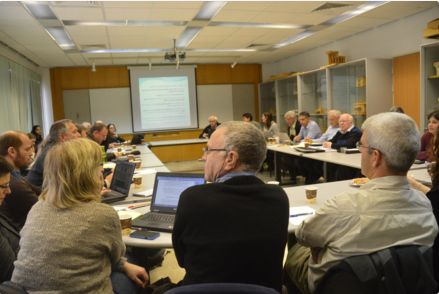Technical Assistance (TA)
Unlike Social Marketing, the Technical Assistance (TA) is based on more personal interactions with the fishers at the fishing group level (cooperatives or associations) or at the individual fisher level. This allows the issues to be addressed with more detail and depth, although larger groups of people are not reached. The overarching goal is to promote fishers´ support for conservation actions (e.g., creation of FRZ, adoption of sustainable fishing practices). Technical assistance tools are targeted towards building capacity in coastal communities and removing technical barriers, emphasizing leadership among fishers to improve the management of fisheries resources. Examples of technical assistance activities include one-on-one conversations, fishing trips, fisher exchanges among sites, formal training in specific fishing methods through workshops and courses, informal training, meetings with the authorities, follow-up with administrative and legal processes (e.g., fishing concession/permit renewal) and providing organizational materials (e.g., file cabinets, blackboards, etc.).
• High level of technical experience and skills of implementing partner allow deeper and more detailed TA interventions with fishers.
• Well designed, implemented and analyzed formative research supports the definition of thematic areas for TA.
• Partnerships with government agencies and NGOs to add human and financial resources and give fishers assurance that their effort is acknowledged.
• Target audience participation in the design and future implementation of TA activities to generate ownership and contribute to reducing the resistance to the campaign effort.
Technical Assistance interventions help the campaign address issues identified in the Barrier Removal step, but interventions are not necessarily limited to that stage in the process. Despite the differences in the context of each campaign site, defined by the conditions of the country and the fishing industry, very similar thematic areas were identified for each TA strategy.
Building trust with the fishers is a primary step for all TA activities. Those activities which involve as many fishers as possible generate ownership in fishers and facilitate the adoption of behaviors. Moreover, fishers are empowered to follow up on the agreements derived from each activity, improve their self-organization, establish agreements internally or with third parties to publicly reaffirm and guarantee their collective decisions, and promote their participation in activities that impact the fisheries management decision-making process.
